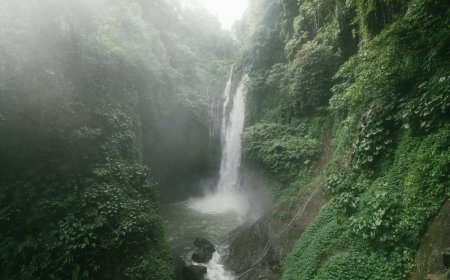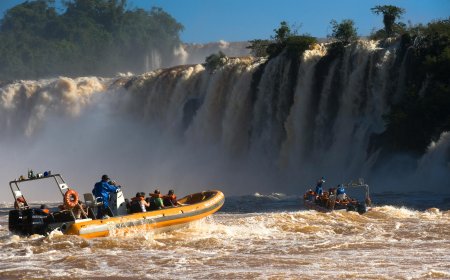Guidelines for Staying Safe in the Jungle
Adhere to the safety guidelines in the jungle to stay safe and protected, as wilderness areas present unique challenges that require vigilance and preparedness. Use survival skills and imagination to adapt to changing conditions and avoid potential risks, such as exposure to harsh weather and dealing with wildlife. Don't forget the importance of respecting the surrounding environment and ensuring you know the way back.

Adhere to the safety guidelines in the jungle to stay safe and protected, as wilderness areas present unique challenges that require vigilance and preparedness. Use survival skills and imagination to adapt to changing conditions and avoid potential risks, such as exposure to harsh weather and dealing with wildlife. Don't forget the importance of respecting the surrounding environment and ensuring you know the way back.
Guidelines for Staying Safe in the Jungle
The basics of staying safe in the jungle entail understanding the fundamental steps and principles adventurers must take to ensure their safety while exploring diverse wilderness environments. In the jungle, travelers face unique challenges that necessitate thorough preparation and readiness to avoid potential risks and ensure their safe return.
One of the fundamentals of jungle survival is understanding the hazards that await explorers, whether related to harsh weather, predatory animals, or even poisonous plants. Adventurers should be aware of their surrounding environment and its potential risks, and learn how to deal with them safely.
It's also essential for adventurers to possess survival skills and imagination that enable them to adapt to the changing conditions in the jungle. They must be capable of making the right decisions promptly, assessing situations, and acting wisely to maintain their safety.
Furthermore, adventurers should be fully prepared to face the challenges they may encounter in the jungle. Preparing adequately for the trip, including carrying necessary tools and equipment, and ensuring an ample supply of food and water, are among the things they should consider beforehand.
Respecting nature and the surrounding environment is of paramount importance in the basics of staying safe in the jungle. Adventurers must exercise caution to minimize their environmental impact and preserve the beauty and diversity of wildlife in the places they visit.
Challenges of Survival in the Jungle
Survival in the jungle entails numerous and diverse challenges that require preparation and adaptation to harsh conditions and unfamiliar environments. Jungles are characterized by their varied and complex terrains, where one can encounter towering mountainous landscapes, dense forests, deep rivers, and mysterious swamps. These terrains increase the difficulty of the task and make it more challenging.
One of the foremost challenges in the jungle is dealing with harsh weather, as one may face sudden storms or rapid weather changes, necessitating being equipped with the necessary gear to withstand these conditions. Additionally, there is a risk of contracting diseases or injuries in an unclean natural environment, requiring preventive measures such as purifying water before drinking and protecting the skin from insects and reptiles.
On the other hand, wild animals pose a real danger in the jungle, as one may encounter challenges from predatory animals and poisonous reptiles. Therefore, it is essential to be aware of local wildlife and learn how to react when encountering them, preferably carrying self-defense tools such as small knives or animal repellents.
Furthermore, rugged terrain and unclear paths can be another complicating factor in your jungle journey, as you may get lost in dense forests or lose your way in thickets. Therefore, it is necessary to learn navigation skills using a compass, maps, and natural landmarks to avoid getting lost and ensure your safe return.
Survival challenges in the jungle require thorough preparation, knowledge of the surrounding environment, and the ability to adapt to changing conditions. This also requires patience and courage to face the challenges that may arise during the journey.
The Dangers of the Jungle
The dangers of the jungle pose a significant challenge for anyone venturing into this diverse and wild environment. Among the prominent risks encountered in the jungle are wild animals, as this habitat is home to predatory animals such as tigers, bears, and venomous snakes, exposing travelers to the danger of attack or potentially lethal bites. Therefore, people must be prepared to deal with these risks using appropriate protective measures, such as carrying defensive tools and familiarizing themselves with the behavior of local animals.
Then there are the unexpected natural hazards in the jungle, such as floods resulting from heavy rains or landslides that may occur in mountainous terrains. These natural phenomena can lead to serious accidents and endanger the lives of explorers, so they must be cautious, monitor weather and environmental conditions, and act carefully in case of danger.
Other risks that one may encounter in the jungle include the lack of basic supplies such as clean water and food, which can lead to hunger, thirst, and disease. Additionally, getting lost in the jungle can result in losing contact with the outside world, making survival even more challenging.
The risks of the jungle encompass many potential factors that travelers must be prepared to face and act cautiously under their influence.
Strategies for Staying Safe and Adapted in the Jungle
Strategies for staying safe and adapted in the jungle rely on a set of skills and knowledge that travelers must apply to survive in this wild environment and adapt to its changing challenges. Here are some strategies that can be followed:
1. Planning and preparation: Before embarking on a trip to the jungle, travelers must carefully plan and fully prepare, including carrying necessary tools and equipment such as tents, non-perishable food items, transportation tools, and communication devices.
2. Learning survival skills: Travelers should learn wilderness survival skills such as shelter building, fire ignition, water collection, and foraging for wild food.
3. Identifying potential risks: Travelers should familiarize themselves with potential risks in the jungle such as predatory animals, venomous reptiles, and harsh weather conditions.
4. Maintaining health and safety: Travelers should take care to maintain their health and safety by avoiding injuries and illnesses and following general safety guidelines.
5. Communication and staying connected: Travelers should maintain communication tools such as mobile phones or signaling devices to communicate with rescue teams in case of emergencies.
6. Respecting the environment: Travelers should respect the natural environment and follow sustainable environmental practices such as avoiding irresponsible waste disposal and preserving local plants and animals.
7. Navigating cautiously: Travelers should navigate cautiously in the jungle and stay on known paths, avoiding straying from usual routes to prevent getting lost.
By using these strategies and practicing proper techniques, travelers can stay safe and adapted in the jungle and enjoy an exciting and rewarding exploration experience.
Exploring pathways and avoiding getting lost
Exploring pathways and avoiding getting lost in the jungle is vital to ensure the safety and success of your journey. Jungle terrains can be complex and ever-changing, making it easy to stray from the usual path and wander into mazes of trees and rocks. Here are some strategies for exploring pathways and avoiding getting lost:
1. Use necessary tools: Make sure to carry directional tools like a compass and maps, and learn how to use them effectively. You can also use smartphone apps that provide maps and GPS to help pinpoint your location and guide you.
2. Navigate by natural landmarks: Look for natural landmarks such as distinctive trees, rivers, or unique terrain features that can be used as reference points to guide you and help you determine the correct direction.
3. Maintain direction: Keep your bearing and try to walk in a straight line as much as possible. Avoid unnecessary turns and sudden changes in direction unless you're sure of the route.
4. Identify prominent landmarks: Try to identify prominent landmarks in your surrounding environment such as mountains, valleys, or rivers, and use them as guides for navigation.
5. Stay in communication with the group: If traveling with a group, ensure to stay in constant communication with them. Update them on your location and provide regular reports on your status.
6. Slow down and focus: Reduce your speed and be cautious while walking, and carefully observe the environment around you to be able to spot trail signs and natural references.
7. Pre-trip training: Train yourself on wilderness survival skills, including how to navigate pathways and avoid getting lost, before embarking on your actual journey.
By applying these strategies, you can increase your chances of successfully exploring pathways and avoiding getting lost in the jungle, and return safely to your starting point.
What You Should Carry and Prepare Before the Adventure
Before embarking on an adventure in the jungle, it is essential to prepare carefully and carry the essential items that will help you stay safe and adapted to the wilderness conditions. Here is a list of items you should carry and prepare before jungle adventure:
1. Drinking water: Carry an adequate amount of clean drinking water to avoid dehydration and thirst in the jungle. You can use a lightweight hydration pack or refillable water bottles.
2. Storable food: Bring dried, canned, or well-packaged foods that can be stored for a long time without refrigeration. Choose high-nutrient foods that provide energy for intense physical activity.
3. Sleeping and shelter equipment: Carry a lightweight tent or sleeping mat and a thermal blanket to protect against cold and moisture while sleeping in the jungle.
4. Ignition and lighting equipment: Make sure to carry fire-starting tools such as waterproof lighters, fire starter sticks, and small flint strikers. It is also preferable to carry a handheld flashlight or lantern for illumination during the night in the jungle.
5. Medical and emergency tools: Carry a comprehensive first aid kit containing bandages, antiseptics, dressing tools, and essential medications. Also, carry a mobile phone with a portable charger and an emergency alarm device if necessary.
6. Navigation and guidance tools: Carry road maps, a compass, and a GPS device, and make sure you know how to use them to avoid getting lost in the jungle.
7. Clothing and personal equipment: Wear weather-appropriate clothing such as lightweight, waterproof clothing and suitable hiking shoes for walking in nature.
By preparing and carrying these items with you before embarking on the jungle adventure, you can improve the chances of success and stay safe and prepared to face the challenges that you may encounter in this wilderness environment.
Respect and Environmental Responsibility
Respect and environmental responsibility in the jungle are essential parts of the experience of survival and exploration in this natural environment. Travelers must play their role in preserving and conserving the environment for future generations. Here are some detailed points about respect and environmental responsibility in the jungle:
1. Avoiding pollution: Travelers should avoid pollution to preserve the stunning beauty of nature in the jungle. They should carry their waste with them and dispose of it safely and responsibly in designated areas.
2. Respecting wildlife: Travelers should respect wildlife and refrain from interfering in its natural activities. They should avoid capturing wild animals or plants or destroying their natural habitats.
3. Balance in resource use: Travelers should maintain a balance in the use of natural resources such as water, forests, and animals. They should avoid excessive exploitation and unsustainable agriculture.
4. Awareness and education: Travelers can contribute to environmental protection by raising awareness and educating others about the importance of conserving nature and wildlife. They can share knowledge and experiences with others to increase awareness of environmental issues.
5. Moving with caution: Travelers should move cautiously in the jungle without causing damage to the surrounding environment. They should stick to designated hiking trails and avoid entering protected or restricted areas.
6. Participation in volunteer work: Travelers can contribute to environmental conservation by participating in environmental volunteer work such as beach clean-ups or tree planting.
By practicing respect and environmental responsibility, travelers can seek a balance between exploring nature and preserving it to enjoy and benefit from its beauty sustainably in the jungle.
Summary
Guidelines for staying safe in the jungle are crucial for travelers and adventurers embarking on an exploratory journey in this diverse and wild environment. Staying safe in the jungle requires taking precautionary measures such as pre-trip preparation, including carrying necessary tools and equipment, and learning survival skills to adapt to changing challenges. Travelers must also respect the natural environment and local wildlife, avoiding pollution and handling wild animals and plants with caution. By following these guidelines and best practices, adventurers can enjoy a safe and enjoyable experience in the jungle without harming the surrounding natural environment.
Sources
1. Department of Defense (DoD) Website
The Department of Defense website offers a range of tips and guidance on how to stay safe in the wilderness and jungles.
2. Centers for Disease Control and Prevention (CDC) Website
The Centers for Disease Control and Prevention website provides important resources on outdoor safety, including guidance on avoiding insect bites and dealing with unsafe water.
3. American Red Cross Website
The American Red Cross offers useful information on wilderness safety and necessary preparation before embarking on outdoor trips.
What's Your Reaction?
















































































































